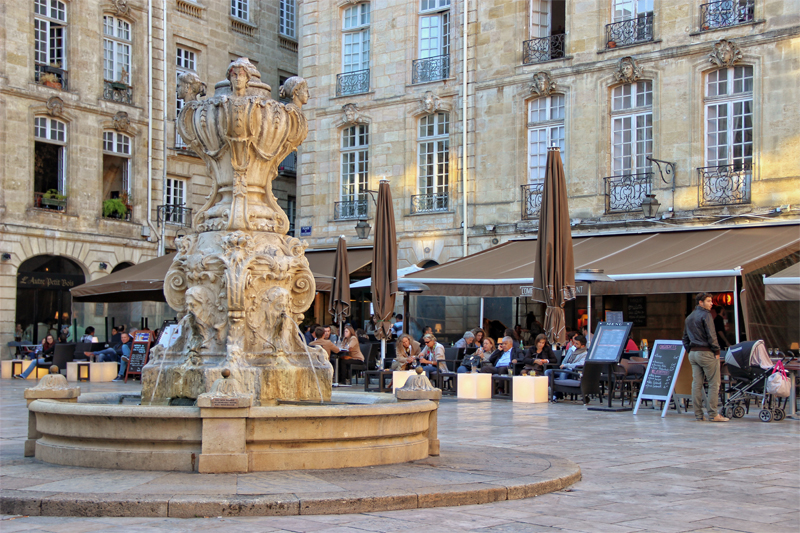
Known as Aquitaine’s “pearl”, the city of Bordeaux, is elegant, sophisticated, packed with beautiful buildings, fabulous restaurants and it is THE place to go if you love wine.
It’s a city with a 2000 year old history and sometimes called the “Port of the Moon” referring to the crescent moon shaped harbour, created by the flow of the Garonne River which runs through its centre.
Bordered by the Atlantic Ocean and the Pyrenees Mountains, Aquitaine and its capital city, Bordeaux is a fabulous place to visit. Around the city explore a wine connoisseur’s paradise with noble chateaux and breath-taking scenery. Inside the city fall in love with its unique and historical treasures and a real feeling of joie de vivre.
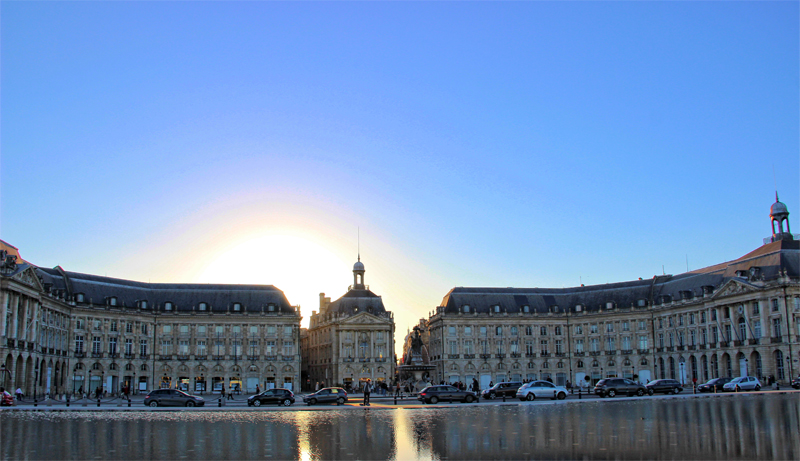
Ancient buildings, quirky shops, fabulous cafés, and elegant squares – this sunny town is perfect for the café lifestyle. Bordeaux has UNESCO World Heritage site status and with good reason – the architecture and sites are fabulous.
Bordeaux has the longest pedestrianised shopping street in Europe, rue Ste Catherine, so finding a souvenir to take home shouldn’t be a problem. Don’t miss Le Miroir – Bordeaux’s stunning water sculpture in front of the Place du Bourse - it’s a must see. And, and on a hot day, it’s a must cool down and run through it place. The perfect place for a promenade is along the river front here.
Discover the 12th, century symbol, the scallop seashell, signalling the way to Le Chemin de St. Jacques de Compostella – Way of St. James – pilgrimage route. Found throughout Bordeaux’ historical squares, inlaid in cobblestone streets and embedded in building facades and fountains around this medieval city, leading the faithful to the notable and majestic Basilicas of Saint-Michel and Saint Seurin, and Cathedral Saint André.
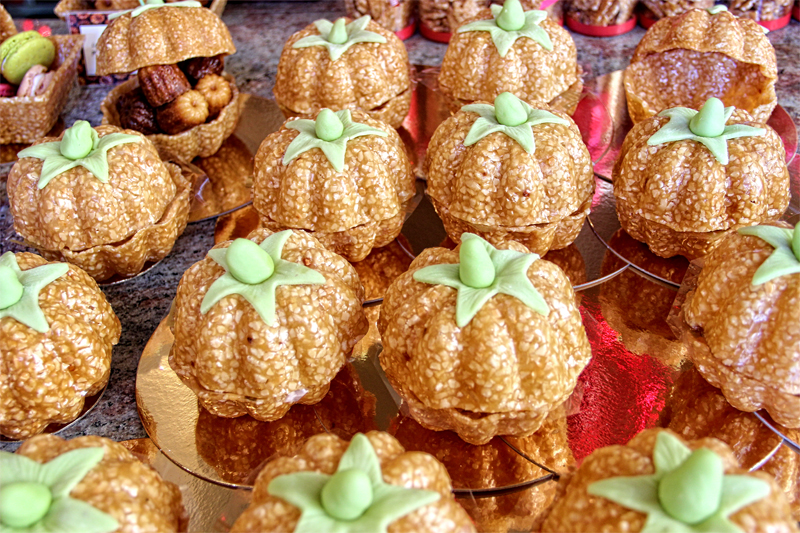
Eating and Drinking in Bordeaux offers you a huge choice. Massive. Nip to the Grand Hotel de Bordeaux for a relaxing drink in a classy setting (you might bump into one Gordon Ramsay – he has a restaurant there, Le Pressoir d’Argent). Nip across the road to dine in style at another of Bordeaux’s most prestigious eateries, the Café Opera at the Grand Theatre.
Try wine tasting – there are lots of wine bar specialists. And don’t forget to try the local speciality, cannelé, a cake that dates back to the 19th century when the nuns of Saint Eulalia created the recipe. With a caramelised shell and sweet tender centre, it’s seriously lush.
Don’t miss the Marché des Capucins dating from 1749, sometimes called the “belly of Bordeaux”. Offering regional delicacies and a sublime number of delicious cheeses, it’s a must for any true foodie.
Find your dream rental in Bordeaux with French Connections – it’s our job to help you make your dreams come true...
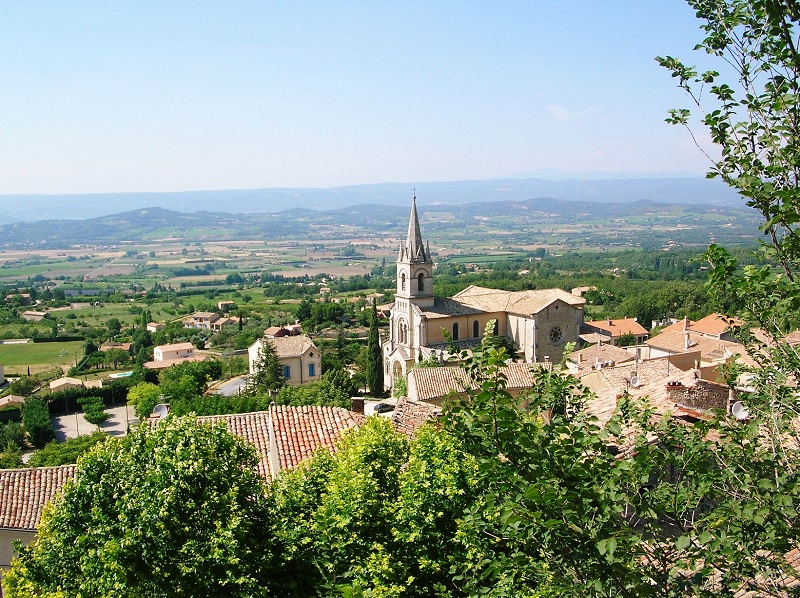
We love French villages for their ancient buildings, shutters with faded paint, chipped plasterwork and worn timber. To make finding the prettiest villages in France simple, there is an official list of “Les Plus Beaux Villages de France”. The best of the best, officially judged. About 150 towns out of the many thousands in France qualify and the rules for eligibility are strict. There must be no more than 2,000 inhabitants and they must have a minimum of two picturesque, legendary, historic, artistic or scientifically interesting sites that are officially protected.
We take a look at three of the prettiest villages in France – in sunny Provence...
You may know Bonnieux from Peter Mayle’s book A Year in Provence which caused millions around the world to fall head over heels in love with this little southern town. It’s one of the most popular and magnificent villages in France. There is no shortage of places to eat and as with most Provencal villages, there is a weekly market (Friday morning).
People have lived here for more than 12,000 years. The Romans came and made the most of this stunning and productive landscape opposite Mont Ventoux 40 kilometres away (25 miles). In the Middle Ages the Knights Templar were stationed in the village, poised ready to head east to the Crusades. Before they left, they built a small chapel on the hillside. The old 12th century church is a landmark and at 425 metres, has one of the best views across the valley. The church tower can be seen for miles around the countryside.
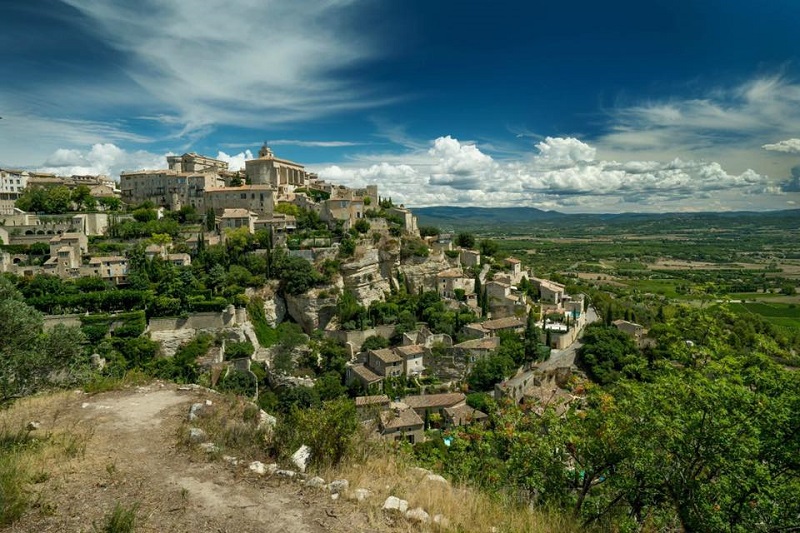
Gordes, in the Luberon region of Provence, is one of the most popular of the officially prettiest villages of France. It’s an ancient hilltop settlement, lined with buff coloured dry-stone walls. It’s the getaway of choice for the wealthy and is very chic and oozes charm.
The site has been occupied since prehistoric times and there’s a medieval castle at the summit, which served as a fortress from the 10th century. A labyrinth of buildings made from stone the colour of pale whipped honey and topped with terracotta tiles twists and turns through the village. Even the dividing fences are made from stone. That’s the village rule.
Several superstars of French painting have sought solace and inspiration in the cradle of this stunning valley. Renoir, Picasso, Matisse and Van Gogh all put brush to canvas here in Gordes.
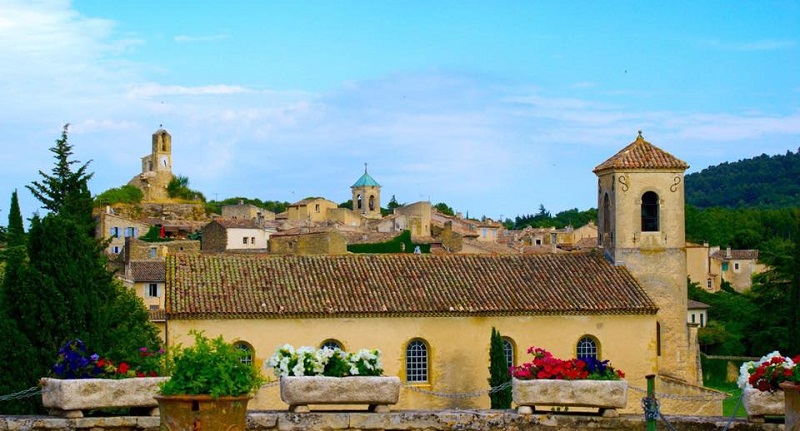
The 1,000 year old village of Lourmarin also makes the grade.
Surrounded by olive groves, almond trees and vineyards, it has a typically Provençal ambience of gentility and beauty, at the foot of the Luberon Massif in Provence. It’s 37km north of Aix-en-Provence en route to Gordes. There are a mere 1000 residents in Lourmarin, but there are an astonishing sixteen restaurants and three café-brasseries.
Albert Camus the French writer, philosopher and winner of the 1957 Nobel Prize for literature, lived and worked amid the town’s ambience of tranquillity and loveliness until his death in 1960. He is still here, buried in the cemetery.
Find your dream B&B, gite and holiday rental with French Connections – we’ve got thousands of gorgeous holiday lets...
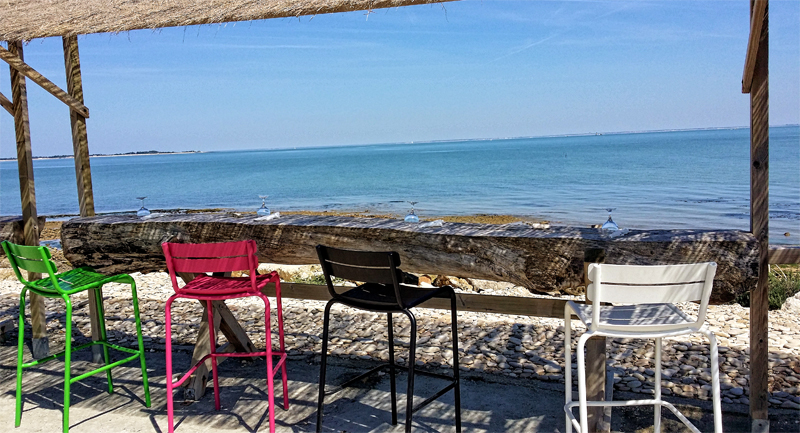
St Tropez on the French Riviera and the Ile de Ré in Charente-Maritime share the same number of hours of sunshine. Both attract lots of tourists and celebrities in summer. But in other ways they could not be more different: bling-bling, showing off and the international jet-set on one side versus elegance, charm and locals for the Ile de Re.
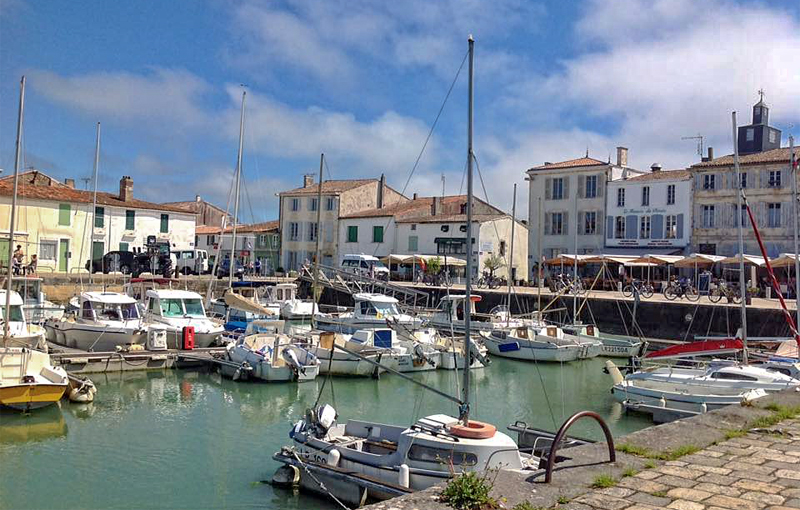
Ré (as the locals call it) is a long, tiny, flat island just off the Atlantic coast, near La Rochelle. Composed of 12 villages, gorgeous little white houses and cobbled streets, beautiful vineyards, potato and asparagus fields, cycle tracks, stunning beaches and salt marshes. The court of Henri IV enjoyed holidays here and the island has been much loved ever since.
The authentic and simple charm of Ré is carefully cultivated by councils who impose restrictive construction rules. No overhead cables, no new building higher than two storeys and all shutters have to be painted in one of 16 shades of blue and green only…
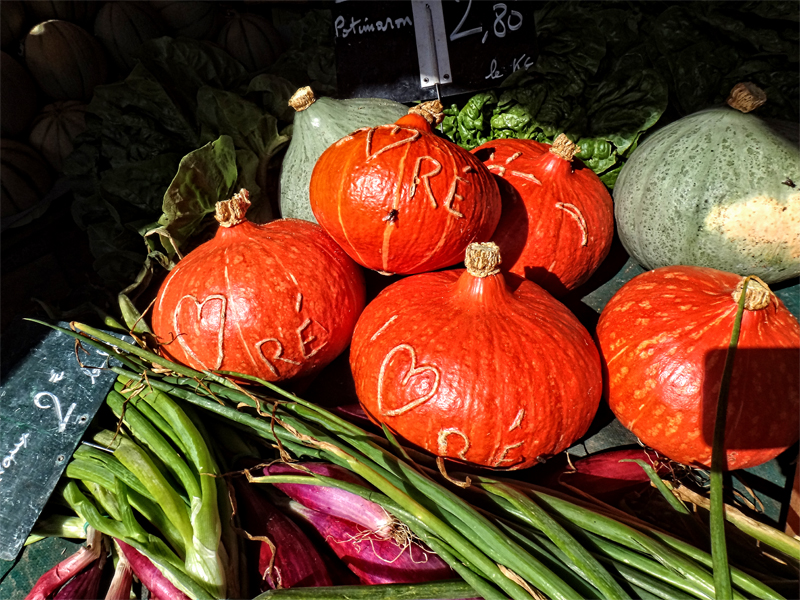
Asparagus, wine, seafood, and cheese are just some of the local products that will make your stay really special. In June you’ll be able to enjoy the best strawberries on earth called Mara des Bois. We recommend you shop at a market for an authentic French experience. There are big farmers markets in Ars and Le Bois but we like the smaller markets at La Noue and La Flotte, the latter has been there since the 14th century. At these little markets, the farmers will show you how to pick the best produce – and they’re cheaper too.
While there are many spots to watch the sunset, one of the best places is at La Conche des Baleines beach at the very end of the island. It is quiet, even in summer, as soon as families have left the silky sand to go for dinner. It’s often warm until late and if you are tempted, this is the place for a skinny dip. There is also a huge wild fig tree on the sand dune, loaded with delicious figs in September. But don’t tell anyone, it’s a secret!
La Martinière is THE place to go for utterly delicious ice cream, a true institution on the Ile de Ré. Yes, it is very touristy and busy but it’s oh so worth it. Be warned, you may not be able to resist the waffles with home-made crème Chantilly and salted caramel sauce made with the Ile de Ré sea salt. They are seriously scrumptious!
French Connections has some wonderful rental homes on the island and close by – making your dream holiday come true…
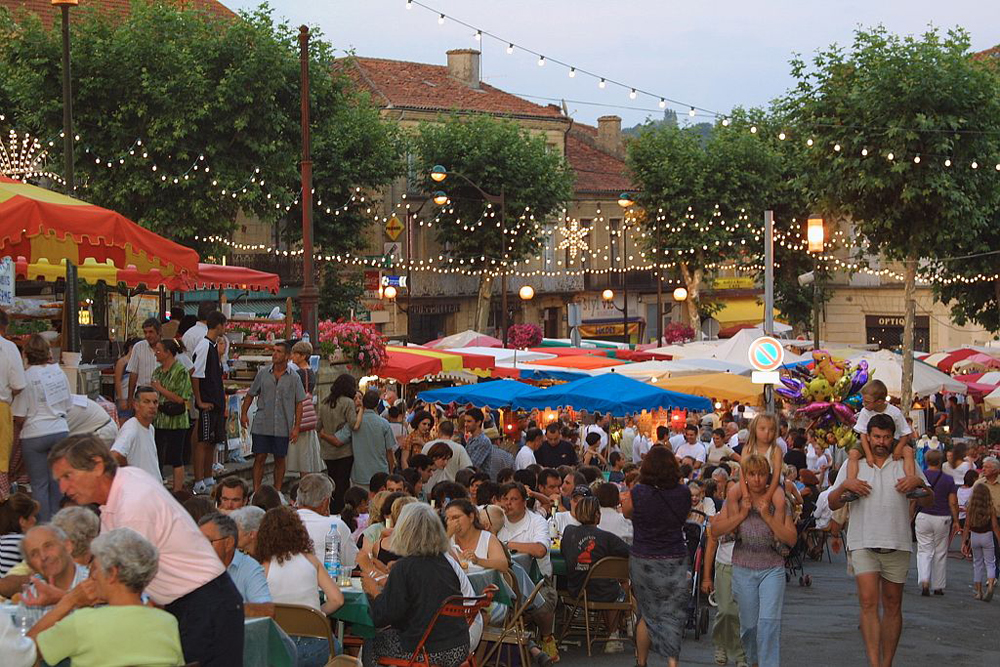
Going to festivals and events in the summer in France is a great way to experience the country’s culture and ambiance. There are hundreds, if not thousands of great events on all over France and here we pick just a few of our favourites.
July and August are when schools close in France and French people take their holidays. The majority of holidays are taken in France and that means it can get very busy. You can pretty much guarantee every weekend starting from mid-July until the end of August will see increased activity on the roads everywhere.
The worst traffic jams are usually the middle week of July - the first big holiday departure en masse for the French. The last weekend of July is traditionally the busiest of the summer and the first weekend of August is also busy.
Useful website: This French government website predicts traffic flows and gives the latest details of congestion. Information is provided in English: www.bison-fute.gouv.fr
Main Square Music Festival Arras, Hauts de France: 20 June – 2 July. The small town of Arras, is the venue for one of Europe’s major musical events – The Main Square Festival. Dozens of the best up-and-coming artists plus leading international artists. This year performers include Radiohead, www.mainsquarefestival.fr
Paris Plage: 8 July – 3 September. Two miles of the Seine (near the Pont Neuf) becomes Paris Plage, the city beach, perfect for sunbathing and relaxing. The aim is that Parisians stuck in the city can enjoy a stroll along the traffic-free river bank or a lazy day by the water. Play petanque and volleyball, take in a concert or enjoy tai chi and dancing – festive, fun and free entertainment. Details: quefaire.paris.fr
Festival of Aix, Aix-en-Provence, Provence; 3-22 July. Spectacular music festival in various locations in this lovely town www.festival-aix.com
Festival d’Avignon, Avignon, Provence: 6-26 July. This annual arts festival is magnificent, with performances given in dozens of venues and in streets and open air spaces throughout the city and beyond; plus hundreds of “unofficial” shows www.festival-avignon.com
Cosmo Jazz Festival, Chamonix, Haute-Savoie: 22-30 July. Free concerts in some of Chamonix’s most amazing locations – such as the top of the Aiguille du Midi, Lac Blanc and Grand Montet. Cosmo Jazz Festival features brass bands playing in breath-taking scenery. www.cosmojazzfestival.com
Festival du Bout du Monde –Crozon, Brittany: 4-6 August. A three-day music festival held on the Peninsula of Crozon, the Festival at the End of the World celebrates French and world music www.festivalduboutdumonde.com
Festival Interceltique de Lorient, Lorient, Brittany: 4-13 August. About 700,000 people from all over the world invade the Celtic land of Lorient to enjoy the cream of Celtic music, from Galicia to Scotland. http://www.festival-interceltique.bzh/
Classique au Vert, Paris takes place in the leafy Parc Floral every weekend from 5 August to 17 September. World-class classical musicians gather while Paris is at its quietest to serenade tourists and Parisians in the beautiful Parc Floral de Paris. https://classiqueauvert.paris.fr/
Route du Rock Festival, Saint Malo, Brittany: August 17-20. Ever since August 1993 and a concert by a group of unknown musicians from Oxford (now known as Radiohead), the Route du Rock Festival of Saint Malo has gone from strength to strength, and become something of a benchmark in terms of British and American pop and rock. www.laroutedurock.com
Rock en Seine, Paris: 25-27 August. Concerts held in the lovely and historic gardens at Domaine National de Saint-Cloud with dozens of top bands: https://www.rockenseine.com/
This is just a smidgeon of what’s on this summer in France, check at local tourist offices for lots of details and nip over to French Connections rental pages to find your dream accommodation in France...
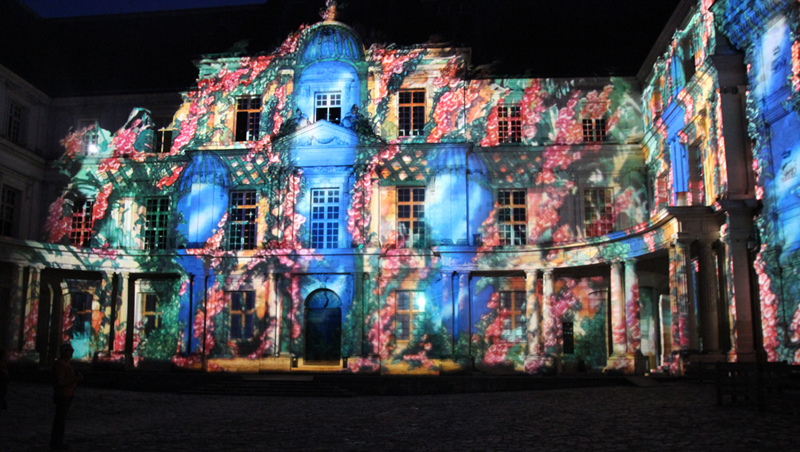
Picture: Blois
In the summer months, cities around France put on heaps of razzle dazzle with son et lumière shows. Castles, Cathedrals, ancient buildings, beautiful gardens and even small villages light up and show off with sound and light shows to wow.
The concept was invented by a French man, Paul Robert-Houdin, then curator of the magnificent Château de Chambord, Loire, France. In the years since, the practice has spread around the world and in France it’s a hugely popular form of entertainment and often free.
Here are some of our favourite summer son et lumière shows that we think you’ll love!
In the spectacular courtyard of this ancient chateau, the buildings are lit up to reveal the story of its dramatic past. Pop on your headphones and listen to tales of love, deception, murder and chivalry (available in English), it runs until 24 September 2017. See website for details and tickets: www.chateaudeblois.fr
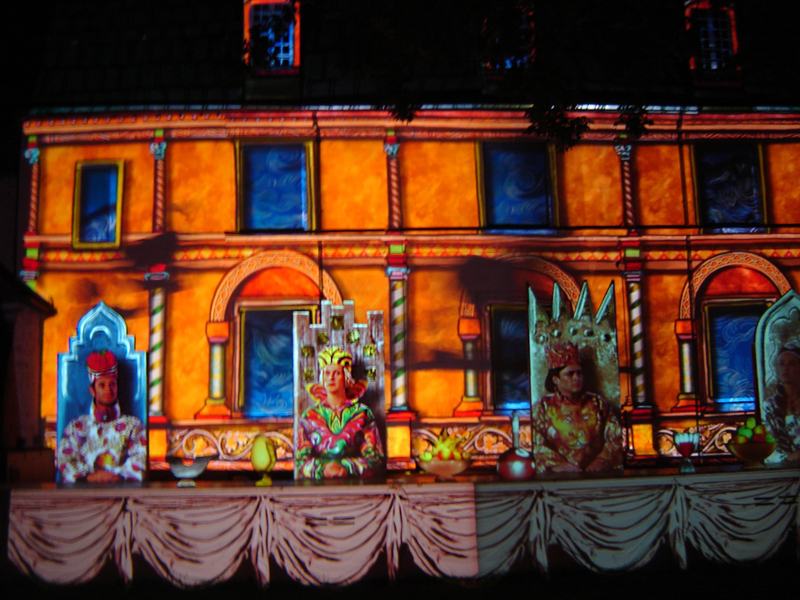
Picture: Le Mans
Known as La Nuit des Chimères this free event sees the medieval quarter of Le Mans turn into a huge and magnificent light fest through July and August. The cobbled streets and facades of historic monuments are transformed into projection screens when dusk falls and brings the city to life after dark. www.nuitdeschimeres.com
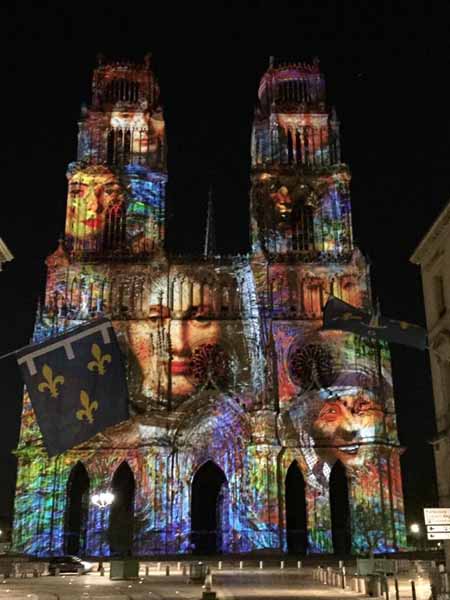
Picture: Orleans
Until 18 September 2017, this magnificent cathedral will show images of Joan of Arc, the “Maid of Orléans”. Wonderfully colourful, the show will take place until September 16 at 11pm and 11.30 pm on Thursdays, Fridays, and Saturdays from July to August. Pop into the tourist office for more details.
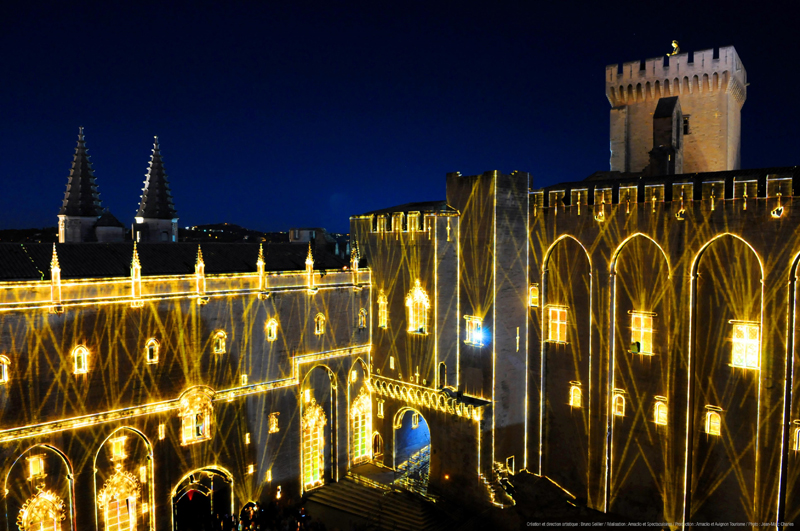
Picture: Avignon © Jean-Marc Charles
A truly sumptuous show with 3D images that conjures up this enormous palace’s papal past before your eyes. Set in a UNESCO world heritage site that has an 800-year-old history, this is one son et lumière show you won’t forget. From 12 August to 30 September 2017, available in English for specific performances, see website for details and tickets: www.lesluminessences-avignon.com
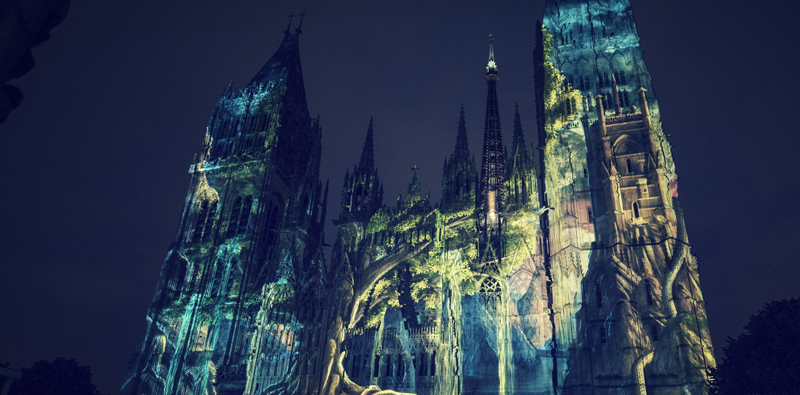
Picture: Rouen © JF LangeMétropole Rouen Normandie
A wonderful nightly sound and light show that illuminates the Cathedral of Rouen with a theme of either William the Conqueror (1066 and all that) or Joan of Arc, who was executed in the town.
From 3 June to 23 September 2017. See website for details: www.rouentourisme.com
French Connections have lots of great accommodation offers for you in all areas of France, pop over to our rental pages and search in the area that interests you to find your dream temporary home.
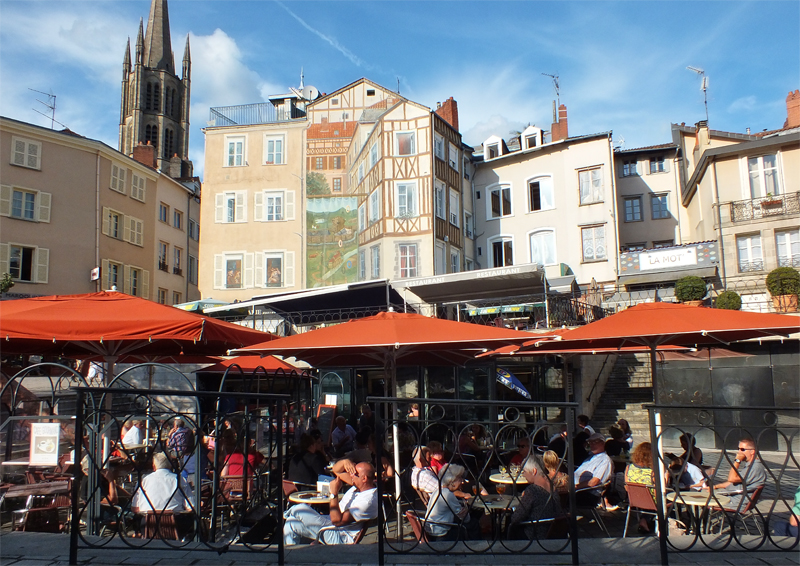
Limoges is the capital of the Haute-Vienne region in southwest France. It’s famous for its porcelain manufacturing industry and there are lots to see, do and enjoy there.
Fans of The Antiques Road Show will know that Limoges Porcelain is the crème de la crème, the best in the world, and it all started in 1768 when a kaolin quarry, a major component of making porcelain, was discovered close to the city. To this day the town of Limoges is peppered with stores selling cups and saucers of every size, shape and style. You’ll find a marvelous array of dinner services, teapots, ornaments and lights in quirky shops and huge warehouses of porcelain.
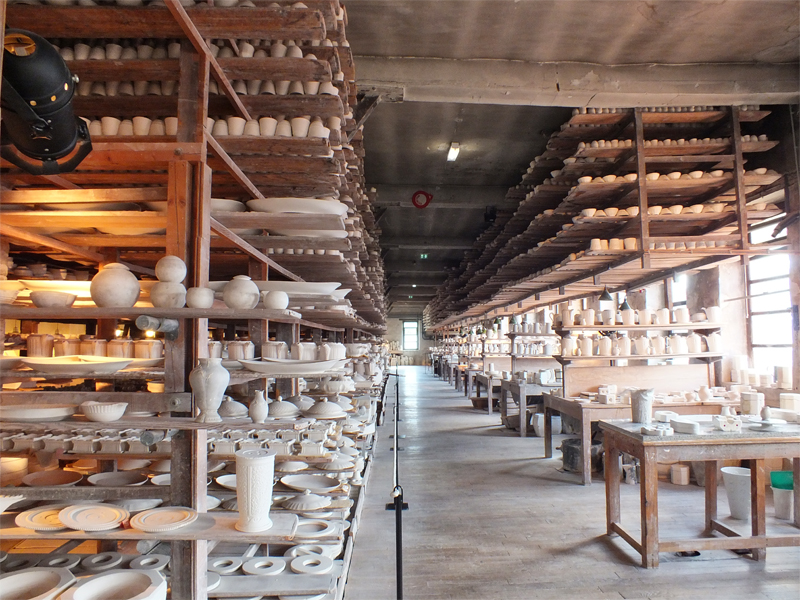
There are plenty of porcelain specialists to visit in Limoges but one of the best is Bernadaud. There you can learn more about the history of the town’s famous product in their museum as well as buy some of the finest tableware. The real deal is translucent, just hold it up to the light and you’ll see the faint glow through the solid fine china. What to see and do in Limoges:
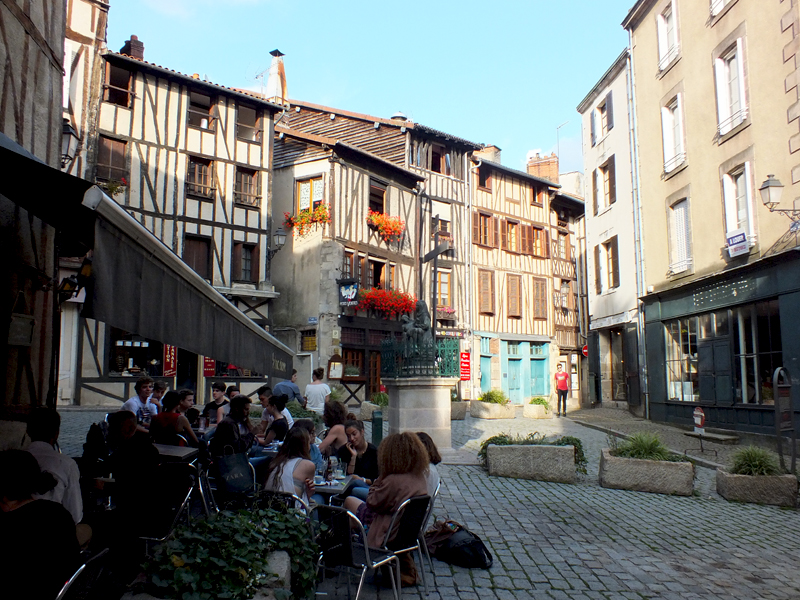
Porcelain fans will love the Adrien Dubouché National Museum of Porcelain with over 10,000 porcelain and earthenware pieces from all over the world, a must-see for ceramics fans.
Limoges Enamel: Just as famous as the porcelain is the enamel work. The first Champléve enamel was created in Limoges in the 12th Century. Today enamellists are reviving a tradition that’s thriving and developing. Try your hand at enamelling at the Maison d’Email (nothing to do with the internet, email means enamel in French), but book in advance to be sure of a place, cost approximately 10 Euros for lesson and for equipment to make your own enamel souvenir…
Musée des Beaux Arts: The city’s impressive art museum is inside a beautifully restored 18th-century bishops’ palace. Enjoy the views over the city from the pretty gardens…
Rue de la Boucherie: Pedestrianised rue de la Boucherie was named for the butchers’ shops that lined the street in the Middle Ages, the timber buildings are quite beautiful…
Eat, drink and be merry: Relax at a terrace café, enjoy a meal at a restaurant – there’s a whole lot of choice here. Try Le Bistrot Jourdan for authentic atmosphere, lovely setting and great food.
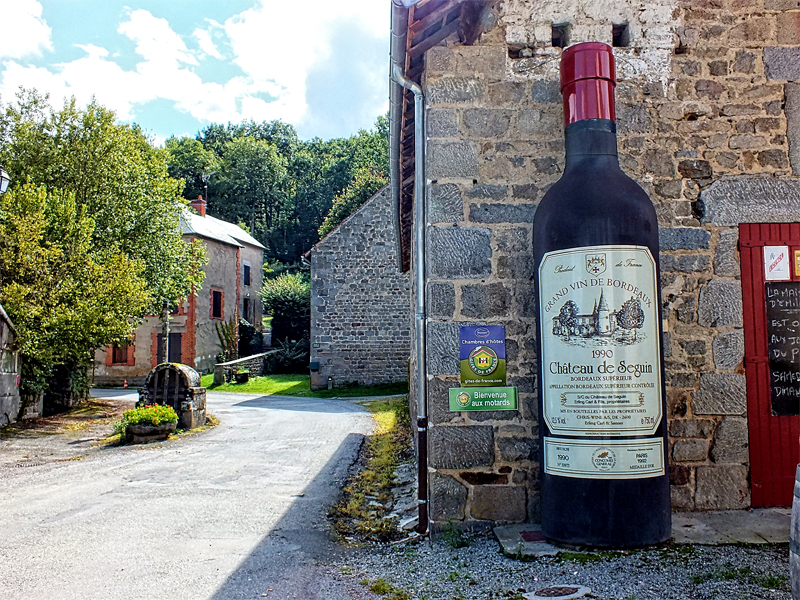
Fresh air and glorious countryside: Get out and about to discover picturesque villages and lush green countryside, places like Lupersat (above), a typical Limousin village with a great little restaurant, La Bistrot d’Emile ( 2 route de Sermur) where you can watch the bread being made for lunch and buy wine to take home. Not too far away is Aubusson, the centre of excellence when it came to tapestries.
For information on what to see and do in Limousin visit: www.tourismelimousin.com
French Connections have loads of lovely holiday homes available in and around Limoges from gorgeous cottages to grand chateaux - making your holiday dreams come true...
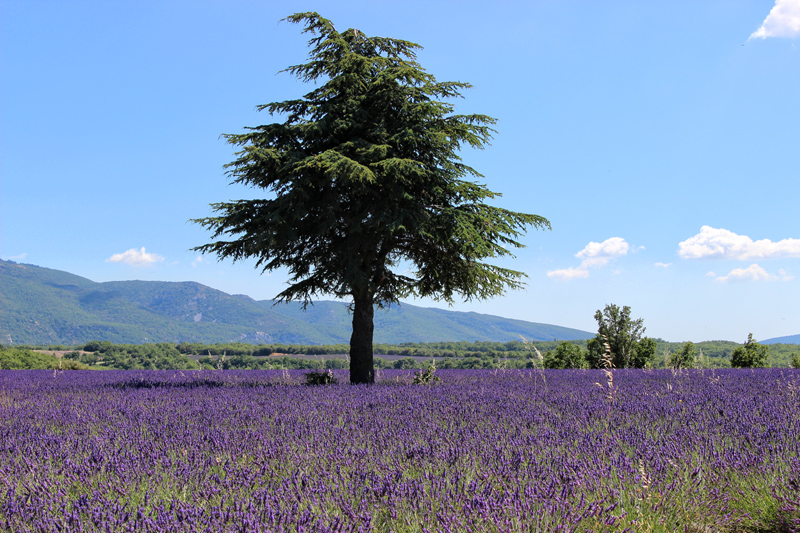
The famous lavender fields of Provence are one of the most beautiful and popular sights of this lovely region in the south of France.
If you’re thinking of visiting and want to see the lavender, here are our handy tips for making the most of your trip.